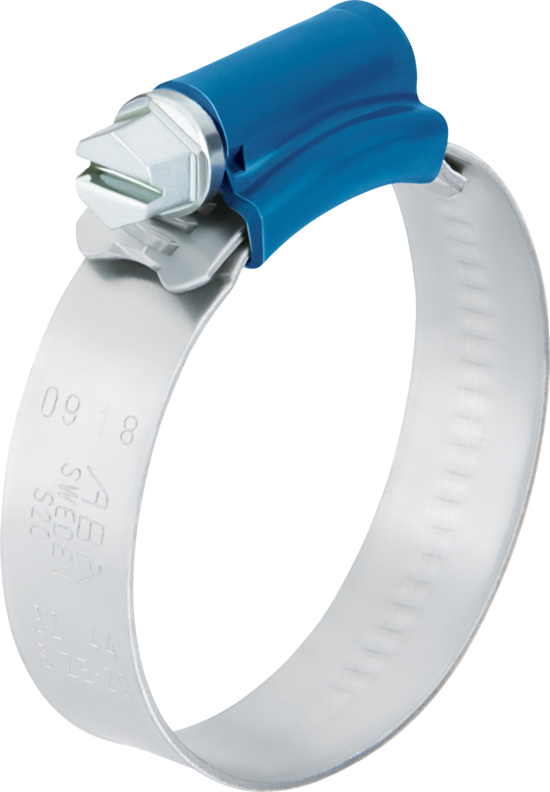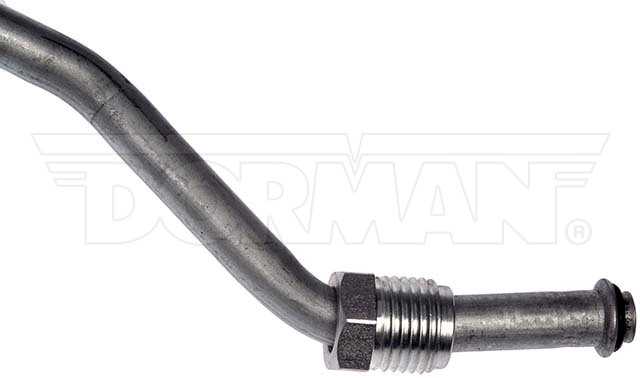
 
     |
| Fuel lines and coolant lines... any sealer? (Page 1/1) |

|
82-T/A [At Work]
|
APR 04, 11:18 AM
|
|
So, couple of questions... looking for best practice, not necessarily what's cheapest.
I'm going to be replacing all my fuel lines, and I wanted to know, is there any kind of paste that you guys would recommend between the hard fuel lines, and the rubber lines. I have something by Permatex, which is meant to help seal the threads in fuel line coupling (I forget what you call it, threaded with the flared nut). So I know I can use this on the threads (though generally unnecessary), but is there anything I can use between the hose and the rubber lines? Can I also use that Permatex sealant? (It's made for fuel connections, and is impervious to heat, and caustic chemicals).
Finally though, my real question is on radiator hoses. When connecting the radiator hose to steel mounts... like for example, the thermostat housing on the Fiero. Is there anything I can put between the hose and the metal? Obviously, I don't want to make it slick so it flys off when under pressure, but I would like to know if there's anything I can put on there that might help inhibit rust and prolong the age of the hoses.
Thanks!!!
|
|

|
theogre
|
APR 04, 12:08 PM
|
|
coolant hoses:
If the metal is rusted then remove that before clamping a hose. To prevent rust, use very thin coat of permatex brake grease. so thin you barely use any and wipe off most you feel.
Inside t-stat tube when off the car, remove rust in there then use Self Tinning Flux and heat to melt that so metal has some protecting.
STF is available in plumbing dept of HD etc.
Can't really do this on the car. Higher heat needed is much harder to handle w/o problems like burn other parts or get way to hot and warp the tube.
fuel lines:
Clean whatever rust then nothing where rubber joints like to tank line assem.
If off the car and dry of fuel, can use STF on that too. Fuel lines aren't SS
But Fuel Filter Is SS and cause dissimilar metal rot...
So one area to watch and protect is hard return line passes thru the gap for filter and band under the car.
see https://www.fiero.nl/forum/Forum2/HTML/146198.html
------------------
Dr. Ian Malcolm: Yeah, but your scientists were so preoccupied with whether or not they could, they didn't stop to think if they should.
(Jurassic Park)
The Ogre's Fiero Cave
|
|

|
82-T/A [At Work]
|
APR 04, 12:32 PM
|
|
Thank you Ogre... couple of questions to your responses...
| quote | Originally posted by theogre:
coolant hoses:
If the metal is rusted then remove that before clamping a hose. To prevent rust, use very thin coat of permatex brake grease. so thin you barely use any and wipe off most you feel.
|
|
Thank you for this. Is this more or less what you're talking about, or acceptable? https://www.amazon.com/Perm...icant/dp/B0018PSASU/

I don't mind buying it because I can use it for when I do brake jobs.
Just want to confirm, this won't cause any damage to the rubber hoses I assume?
Any preference on the type of hose clamps? I have normal hose clamps that came with the car... I also have stainless steel ones that are the normal worm-screw kinds, and then there are these stainless steel ones from Harbor Freight. Any thoughts on this?

I don't mind spending the money... this will be for my daughter's car, so I want it done the right way... not the ghetto way I used to do things ~20 years ago when I was 19-20 and working on my Fiero in the parking lot of my apartment complex.
| quote | Originally posted by theogre:
Inside t-stat tube when off the car, remove rust in there then use Self Tinning Flux and heat to melt that so metal has some protecting.
STF is available in plumbing dept of HD etc.
Can't really do this on the car. Higher heat needed is much harder to handle w/o problems like burn other parts or get way to hot and warp the tube.
|
|
Thanks, yeah... I intend to eventually rebuild the engine, but I'll be taking stuff like this off... water neck, etc... and sanding / painting the outside at least.
| quote | Originally posted by theogre:
fuel lines:
Clean whatever rust then nothing where rubber joints like to tank line assem.
If off the car and dry of fuel, can use STF on that too. Fuel lines aren't SS
But Fuel Filter Is SS and cause dissimilar metal rot...
|
|
I probably should have mentioned. I'm going to be replacing the entire pickup, fuel pump, everything, including the hard lines, all with brand new stainless steel lines from the Fiero Store. So everything will be SS. So when you say the STF... that's just flux, there's no metal or anything in it... are you saying I need to use some solder, or I'm just using the flux and then heating it so it spreads? I assume for the threads, I can use the Permatex fuel line sealant (meant for threaded fuel lines)? I think years ago... I put some plumbers tape (haha)... but I was a kid and didn't know any better. It hasn't leaked... so there's that, haha. But that's my car... my daughter's car will have all new parts.
Hahah! Yes... it's funny you send this link. This is literally the post that I read a week or so ago, that made me decide to simply replace EVERYTHING in the fuel line. I'm literally replacing the entire pickup, fuel pump, using the submersible fuel line (saw that post too), replacing the hard lines, and then also replacing the fuel filter, cleaning and painting the bracket, and rebuilding the TBI unit and replacing the injector too.
|
|

|
sleek fiero
|
APR 04, 01:18 PM
|
|
|
82-T/A . Don't apply any sealant to fuel lines. They are designed to seal dry. If even a micro spec of sealant were to reach an injector it would ruin it. sleek
|
|

|
sleek fiero
|
APR 04, 01:19 PM
|
|
|
82-T/A . Don't apply any sealant to fuel lines. They are designed to seal dry. If even a micro spec of sealant were to reach an injector it would ruin it. sleek
|
|

|
82-T/A [At Work]
|
APR 04, 01:24 PM
|
|
| quote | Originally posted by sleek fiero:
82-T/A . Don't apply any sealant to fuel lines. They are designed to seal dry. If even a micro spec of sealant were to reach an injector it would ruin it. sleek |
|
Thanks Sleek, I was only planning on using it on the threads, but absolutely no where on the mating surfaces where it's flared. I also wanted to use it on the rubber O-ring between the pickup and fuel tank.
Thanks!
|
|

|
theogre
|
APR 04, 01:36 PM
|
|
STF is flux and non lead solder to melt on a surface. Save a lot of time doing plumbing work for most people because can see tinning happen before burning the flux. Can use solder too but have issues/problems fixing cars in different areas. Don't need non lead solder here and most are Higher Heat then 60/40 lead.
SS hate most solders and won't stick.
even w/ SS return line may be good plan to heat shrink the part bypassing the filter because band etc there isn't SS.
Yes, green label is fine here. won't wreck rubber, plastic, etc.
No need for high $ clamps.
High pressure Fuel lines need better clamps then standard worm screw and other clamps but don't over tighten them either.
Had posted some examples in other threads.
Return and vent lines don't care much about clamps but easier to have all same for V6 etc w/ 40+psi on feed line to engine.
Better clamps don't have sharp edges etc.
Example: Can get "Guarded" worms that have extra metal under the worn slots so the slots don't dig into the rubber. But most places don't have them.
TFS just jack up price for thing made by https://www.inlinetube.com/
|
|

|
Larryinkc
|
APR 04, 01:58 PM
|
|
I use ABA hose clamps. They have rolled edges and aren't perforated to keep from damaging your hoses.

|
|

|
theogre
|
APR 04, 05:01 PM
|
|
| quote | Originally posted by 82-T/A [At Work]:
Thanks Sleek, I was only planning on using it on the threads, but absolutely no where on the mating surfaces where it's flared. I also wanted to use it on the rubber O-ring between the pickup and fuel tank. |
|
Line O-rings are Vitron and Do Not use sealers on them. You should use a bit of silicone oil to lube to install a joint. Fuel washes most or all away but any oil left "outside" of the actual seal helps keep out road water.
GM Fuel O-rings for lines compresses into a design space. The nuts only hold the "flange" to take mechanical loads has nothing to seal the joint.
Quick example of this end:

source www.dormanproducts.com/p-64926-800-893.aspx and hose/line likely won't fit Fiero
Vitron comes in brown and black for most normal uses. White and other colors for FDA rated Food machines etc.
So don't think black = "rubber" in many areas touching fuel or engine/trans oil.[This message has been edited by theogre (edited 04-05-2023).]
|
|

|
theogre
|
APR 05, 10:33 AM
|
|
Also...
when I change the filter or remove it for any reason, I let parts dry off so can coat the line w/ brake grease where nut covers.
Fiero filter under the car gets the nut full of any road crap making hard to remove later.
Just watch tightening because grease make it easy to over torque causing problems too.
tightening... applies to most flare connection types.
I put 2 wrenches on the joint so both on same side so can grab them w/ 1 hand and squeeze like pliers.
Can remove most flare joints same way if not rusted or morons worked on them before.
Note:
Many Fuel Filter is 20mm nut on it. Not a common fix wrench in most places. Not even common to most Flare Wrench kits too.
Can use many adjustable types but make sure fits tight or can be bigger pain and soon.
Other fuel line nuts can be SAE or Metric. Use whichever that fits tight for same reason.
Example: I think 2 fitting by battery uses 5/8" and 9/16" flare wrenches.
|
|
    
  |
|















